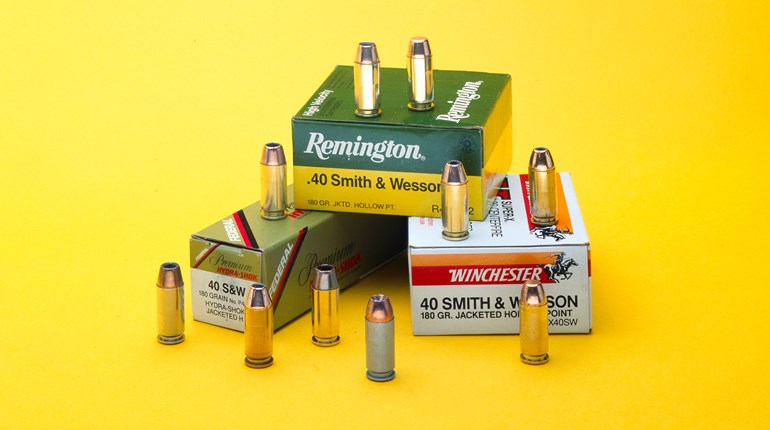
Adopted by the U.S. Marine Corps in November 1942, the Ka-Bar knife became legendary as the fighting blade used extensively in World War II's Pacific theater and beyond, replacing the military's earlier fighting blade: the Mark I trench knife.
Warriors have little use for weapons that do not perform. Once in a while, someone in the supply chain comes up with a weapon or even a tool that just doesn’t do what it needs to. Troops will trade them, find excuses for not carrying them or even conveniently “lose” them. On the other hand, when an item develops a good reputation, the men who use it will go to any length to keep it. My Marines, for example, loved those old Thompson submachine guns. They may have been heavy, awkward and hard to acquire, but they somehow managed to find them in Vietnam. There was a lot of Marine Corps history wrapped up in that gun—all the way back to guarding the U.S. Mail in the 1920s. Using firearms in actual fighting tends to develop abiding affection for them, as did the 1942 Marines who had to give up their ’03 Springfields for “...these damned new self-loader Garands.”
The forgoing merely establishes that those who do the hard work of the infantrymen come up with a persistent and affectionate respect for the tools they use for the job. No, this will not be another keening and wailing session over yet another firearm that the old guy just can’t give up. We’re talking about a blade—one that the Marine Corps has seen fit to issue for three-quarters of a century. The year 2018 marks the 75th anniversary of the Ka-Bar knife. I checked with an impeccable source and happily discovered that this simple and reliable piece of gear is still issued to Marines.
The Ka-Bar story began in the immediate pre-World War II era when the armies of the free world were arming for war. The obvious need for a close-quarters-fighting knife came out of the trench warfare of the Great War. American doughboys were equipped with wicked stabbing devices that incorporated brass knuckles and were nearly useless for any ordinary cutting function. Several knives were considered for World War II Marines, including a sexy variant of the Fairbairn-Sykes fighting stiletto with a USMC-marked blade. Eventually, cooler and wiser heads prevailed and the knife now known as the Ka-Bar became our issue knife—fighting and utility.

Made at the start by Camillus Cutlery, the first of the breed were enthusiastically welcomed by troops. The knife came in a heavy-leather sheath that held up quite well. A slight variation of the traditional Bowie shape, the Ka-Bar had a 7.5-inch blade with what is called a clip point. The blade is sharpened on the lower edge, except for a crescent section at the top edge of the tip. This is a well-designed blade for general cutting and scraping to both stabbing and slashing in a fight. For a handle, the specifications called for a compressed stack of leather washers on a metal tang, topped with a heavy steel pommel.
Over the years since World War II, the Ka-Bar has been made by several different makers and there have been some differences. I have seen a few of the early ones that were polished and blued, but most have a functional dull finish. Also, the first of the breed had a large “USMC” stamped on their ricasso. Supposedly, production of this variant was stopped when it was found to crack at the point of the marking. And I can also recall an unusual specimen with a much tighter radius to the curve of the tip. Although the knife is issued to line units, it is also available for sale to civilians. Commercial Ka-Bars are available with a seemingly endless variety of commemorative markings.
There is endless folklore surrounding the Ka-Bar. The knife could be sharpened to a so-called “razor” edge. Originally, the knife was intended to be a utility tool for any Marine who did not have a rifle and therefore, a bayonet. That is actually quite a few Marines—about 20 to 25 percent of an infantry unit. Obviously, the knife was also intended for use as a last-ditch or quiet weapon. If the truth were known, they cut far more cases of C rations than they did throats, whittled more tent pins than enemy viscera. The typical Ka-Bar took a severe beating during its time afield. So much so that one young Marine in my outfit had a problem with his one night in Vietnam. He was on an ambush patrol and trying to stay quiet. A Viet Cong came along the trail and they snatched him up. When other Cong approached, the prisoner started making a ruckus and…well, one worn old knife just wasn’t capable of getting it done.
This is not to say the Ka-Bar didn’t shed blood. My wife’s father drove an amphibious tractor ashore on Okinawa—on the day she was born. He made it home OK and brought the Ka-Bar he carried all through the Pacific. She grew up on a small farm where the Ka-Bar was a sort of communal cutting tool. Nan recalls the old warrior blade presiding at the demise of many a Rhode Island Red that she and her brother dressed and sold for movie money on Saturday. Not a bad end for one hunk of fightin’ iron.



































